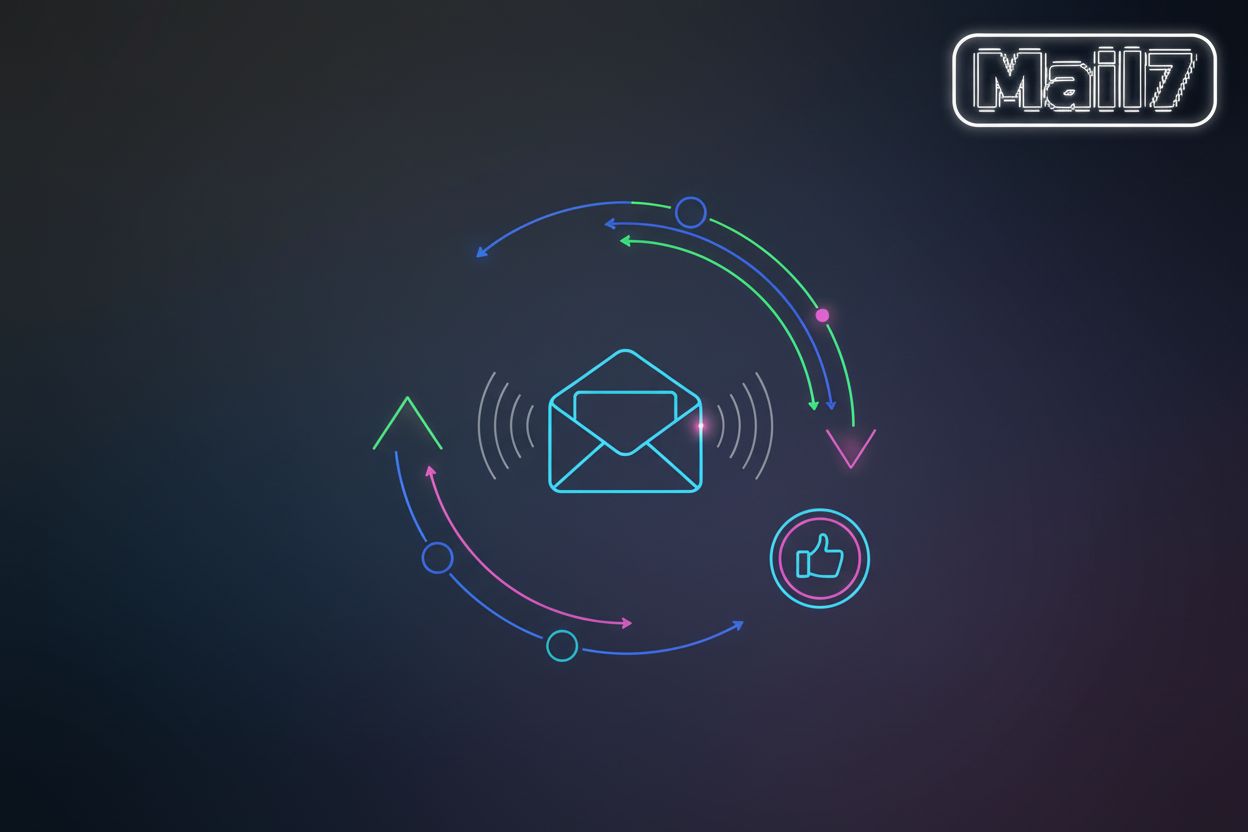How to Validate an Email Sender Effectively
TL;DR
Why Validating Email Senders Matters
Okay, so why should you even bother validating email senders? I mean, besides the obvious "not looking like a total amateur" thing. Well, let me tell you, it's kinda crucial for a bunch of reasons.
- Deliverability takes a nosedive if you don't. Think about it: if you're constantly pinging dead email addresses, email service providers (esps) are gonna start thinking you're shady. (Credential phishing targets ESPs through ESPs - Kaspersky) And nobody wants to end up in the spam folder, right?
- Your sender reputation is on the line. It's like your credit score, but for email. Mess it up, and you're gonna have a hard time getting your messages delivered How to Validate Email Addresses for Improved Deliverability [Tools & Best Practices] - DuoCircle - this source talks about how important your sender reputation is, and it's not something you can afford to ignore.
- You're throwing money away. Seriously, why waste resources on sending emails that are just gonna bounce? That’s just bad business. Plus, you could even run into some legal trouble regarding data protection, like fines under regulations such as GDPR or CCPA if you're not careful with how you handle data and send to invalid addresses. So, yikes.
A study showed that nearly 23% of all email addresses collected are invalid, that's a HUGE number Best Email Verifier AI Tool to Validate an Email Address - it makes you think, right?
So, validating email senders is more than just a formality; it's about protecting your reputation, saving money, and making sure your emails actually get where they're supposed to go. The consequences of not doing it can be pretty nasty, trust me, you don't want to skip that part.
Understanding Email Validation vs. Verification
Okay, so you're probably wondering what the heck is the difference between email validation and verification, right? It's not just semantics, trust me.
Email validation is like, the first line of defense. It's a basic check to see if the email looks right. Think of it as, does it have an "@" symbol? Is there a ".com" or some other valid domain extension? It's making sure it follows the rules, basically. But it goes deeper than just that. It also involves checking the syntax to make sure it's properly formatted, identifying role accounts (like info@ or support@) which often have higher bounce rates, and flagging disposable email addresses (DEAs) that are often used to bypass sign-up processes.
Email verification? That's the deep dive. It actually checks if the email address exists and can receive emails. It's like knocking on the door to see if anyone's home. This is gonna help avoid those pesky bounces, and keep your sender reputation in good shape, as DuoCircle explains - it's all about keeping your sender reputation healthy.
So, validation is more about format and potential issues, while verification is about existence and deliverability. Now that we got that straight, let's talk about how to actually do this stuff.
Methods for Validating Email Senders
Validating email senders – it's not just about avoiding bounces, but about keeping your sender reputation squeaky clean, right? So, how do you actually do it? Let's get into some methods.
First up, we got domain and MX record verification. Think of it as checking if the house has a valid address and a mailbox that actually works.
- DNS lookups are key. You want to make sure the domain actually exists. It's like, step one in making sure you're not sending emails into the void.
- MX records? These tell you if the domain is set up to receive emails. No MX records, no emails getting through – simple as that.
- Tools like mxtoolbox can be lifesavers here. They let you quickly validate the health of a domain, as DuoCircle mentioned earlier - it lets you see if the domain has valid MX records. For example, if you go to mxtoolbox.com and enter a domain like
example.com, you'll see a list of its MX records. If there are no records, or the records point to non-existent servers, you know that domain isn't set up to receive emails.
Imagine you're a marketing manager. You're about to launch a huge campaign and you've got thousands of email addresses. Running them through a domain and MX record verification tool before sending can save you a ton of headaches and wasted resources.
Think of domain and MX record verification as the foundation. Next, we'll look at SMTP pinging and mailbox verification.
Tools for Effective Email Sender Validation
Okay, so you're probably thinking, "Great, another thing I gotta worry about?" But trust me, the right tools makes email sender validation way less of a headache.
There's a bunch of online services that'll do the heavy lifting for you. Think of 'em like hiring a bouncer for your email list--keeping the riff-raff out.
- ZeroBounce, NeverBounce, and BriteVerify are some of the big names. They all boast about their accuracy, but honestly, it's worth doin' some research to see which one fits your budget and specific needs.
- Features vary, but most services will let you do batch validation -- upload a huge list and let them go to town. It's a lifesaver if you're dealing with thousands of addresses.
- Pricing can be a bit tricky, but usually it's based on the number of emails you're validating.
For example, if you're at some healthcare provider sending out important updates to patients, you really don't want those emails bouncing, right? These tools can help make sure that happens.
API Integrations for Email Validation
Beyond just using web-based tools, many services offer api integrations. This means you can connect their validation services directly into your own applications or workflows.
- What are they? APIs (Application Programming Interfaces) are like translators that allow different software programs to talk to each other. In this case, an email validation api lets your system send an email address to a validation service and get a result back instantly.
- How do they work? When a new email address is submitted through your website's sign-up form, for instance, your system can send that email address to the validation api. The api then checks the email against its databases and rules, and sends back a response indicating if it's valid, invalid, or risky.
- Benefits: This is super useful for real-time validation. You can prevent invalid emails from even entering your system in the first place, saving you time and resources down the line. It's also great for cleaning existing lists by running them through the api.
Next, let's talk about keeping your list clean.
Best Practices for Maintaining a Clean Email List
Maintaining a clean email list? It's like weeding a garden – gotta do it regularly, or things get outta hand fast. So, how do you keep your list spick-and-span?
Seriously, double opt-in is a game-changer. It's where folks confirm their email before joining your list. Think of it like this:
- It Cuts down on fake emails, or typos.
- You're gettin' folks who actually want your emails.
- Engagement goes up, 'cause people chose to be there.
Don't let inactive subscribers drag you down! Regularly, you should prune your list.
- Ditch the inactives. If they ain't clickin', they ain't helpin'.
- Segment your list, based on engagement. Give the super-fans some extra love.
- Watch those bounce rates! They'll tell you where the problems are.
Think of disposable emails like those temp credit cards you get, but for your inbox. Catch 'em at the door with an api like the one Mail7 offers, so you don't get stuck cleaning up the mess later. Using an api to detect and flag disposable email addresses as they sign up is a key part of preventing list decay and maintaining a high-quality list from the get-go.
Advanced Strategies for Email Sender Reputation
Alright, so you've done the work of validating your email senders, now what? It's not a "one and done" kinda thing. Think of it more like tending a high-performance engine.
- Keep tabs on your sender score and IP reputation. There's tools out there that'll help ya do this, and you definitely wanna know if things are startin' to slip. This means regularly checking services that monitor your sending IP address and domain's reputation. They'll give you a score based on factors like past sending activity, complaint rates, and bounce rates. If your score starts dropping, it's a red flag that you need to investigate and make changes.
- Nail those bounces and unsubscribes. Automate the removal of hard bounces, like, yesterday. Hard bounces mean the email address is permanently invalid, so keep sending to them is just hurting your reputation. For unsubscribes, make it easy and quick--folks will appreciate it, and it prevents them from marking you as spam. Many email marketing platforms handle this automatically, but it's good to be aware of.
- Get friendly with feedback loops. Setting these up with esps (like Gmail, Outlook, Yahoo) lets you catch those spam complaints early. When someone marks your email as spam, the ESP can send a notification back to you through a feedback loop. This allows you to immediately remove that subscriber from your list and understand why they complained, helping you avoid future issues. Nobody wants to be "that" sender, right?
It's all about protectin' your email sender reputation, as noted earlier - which ultimately helps your emails actually get delivered.





